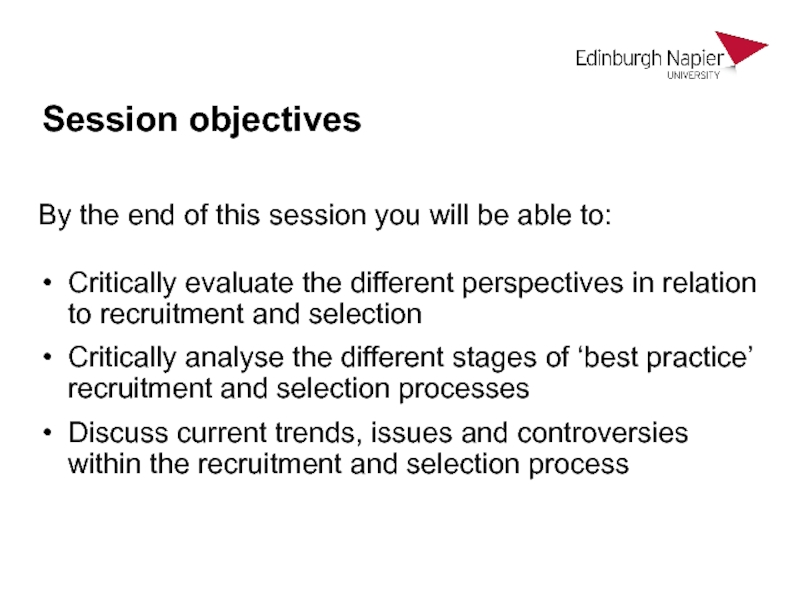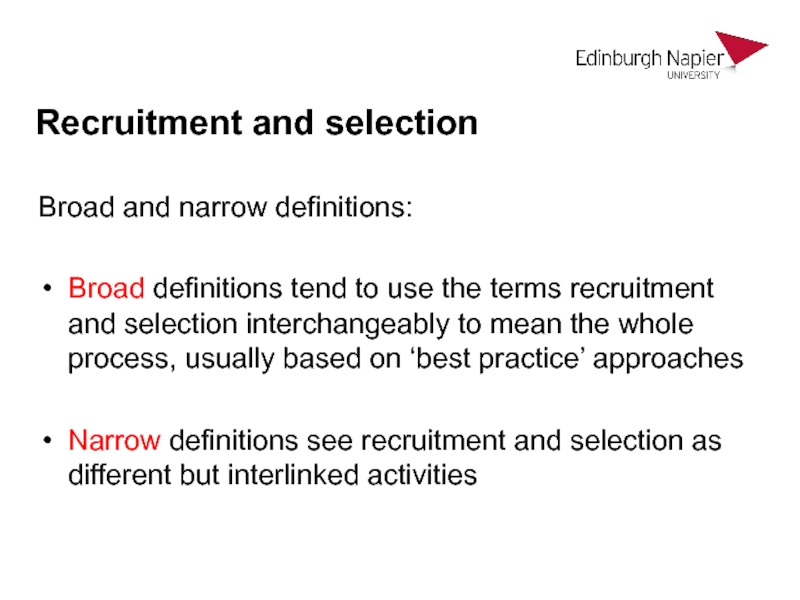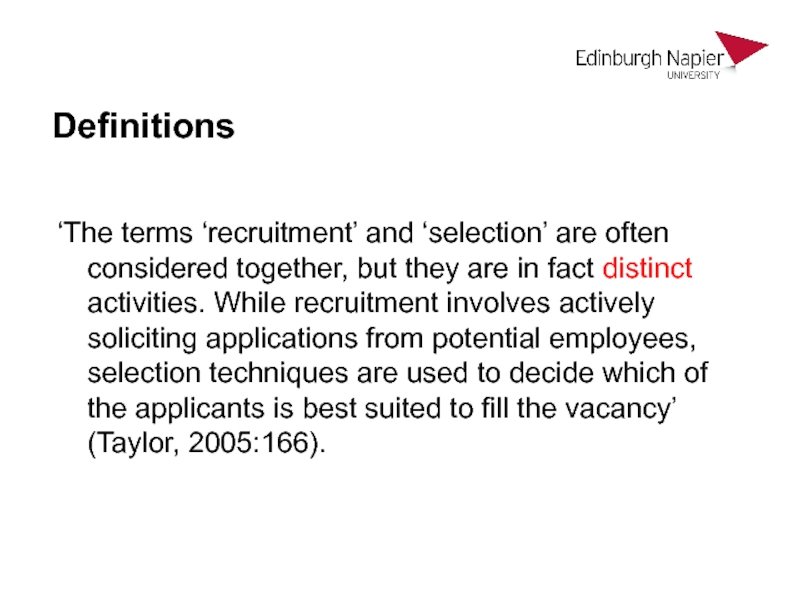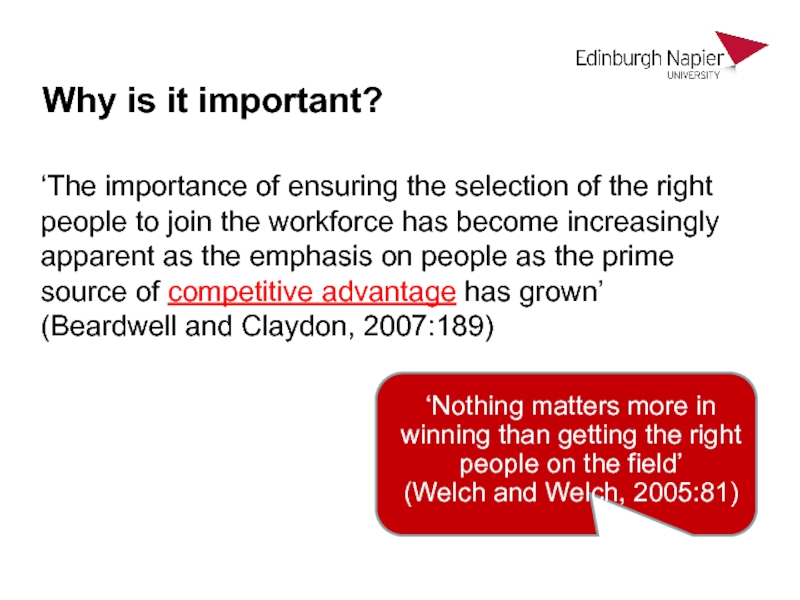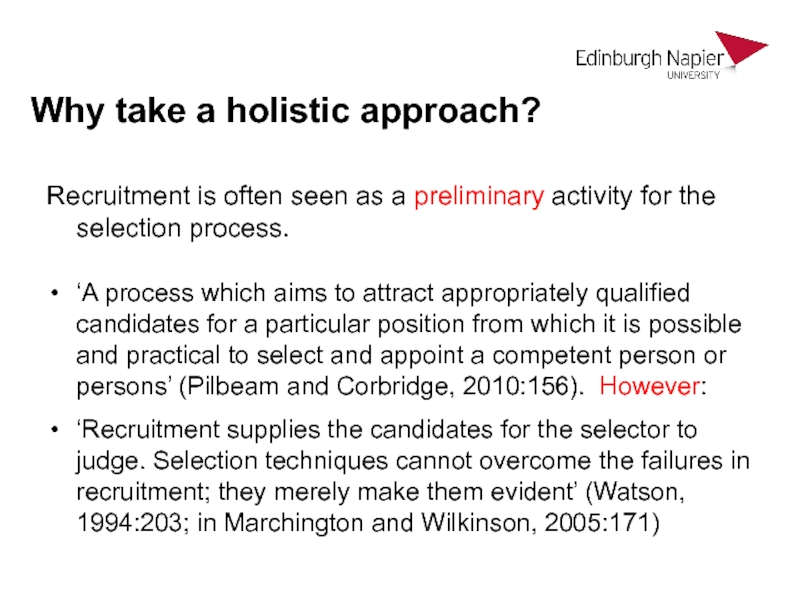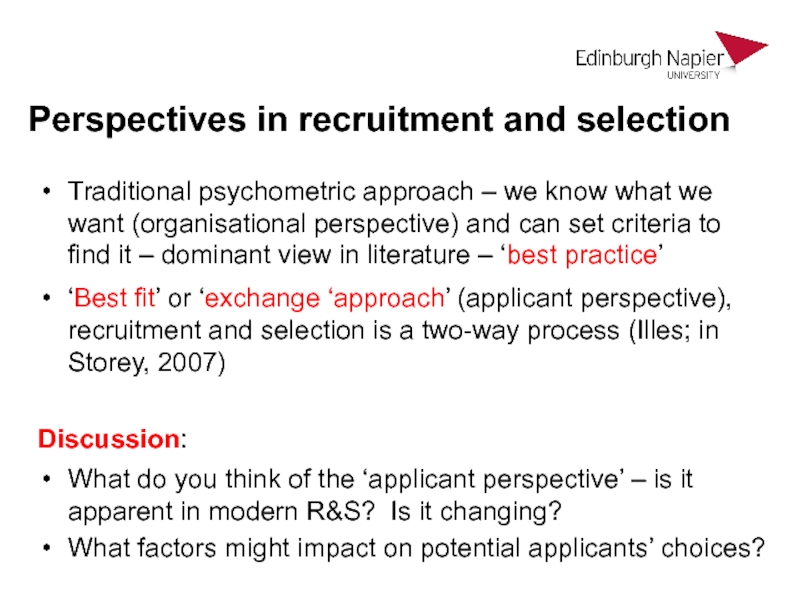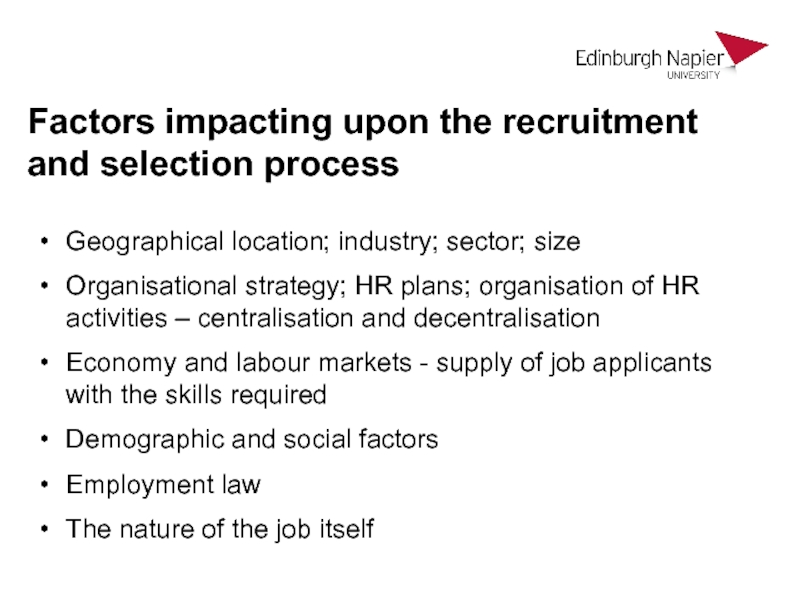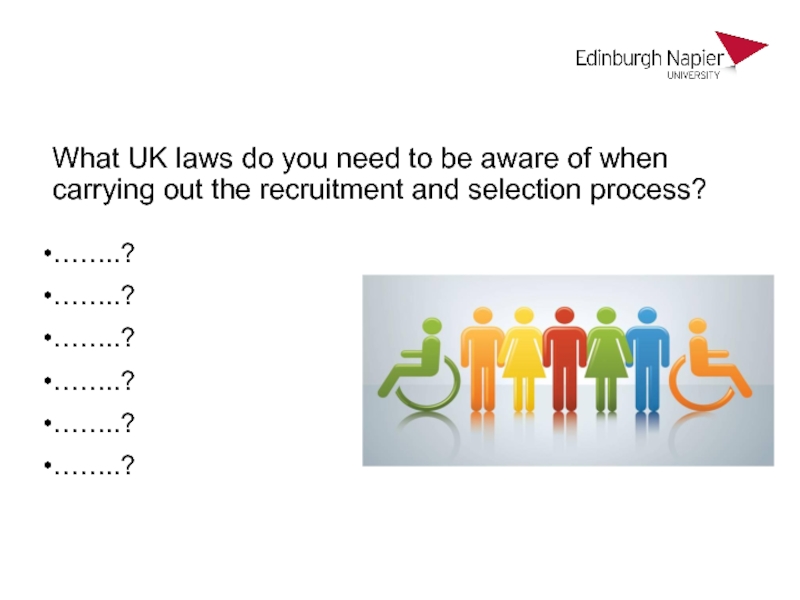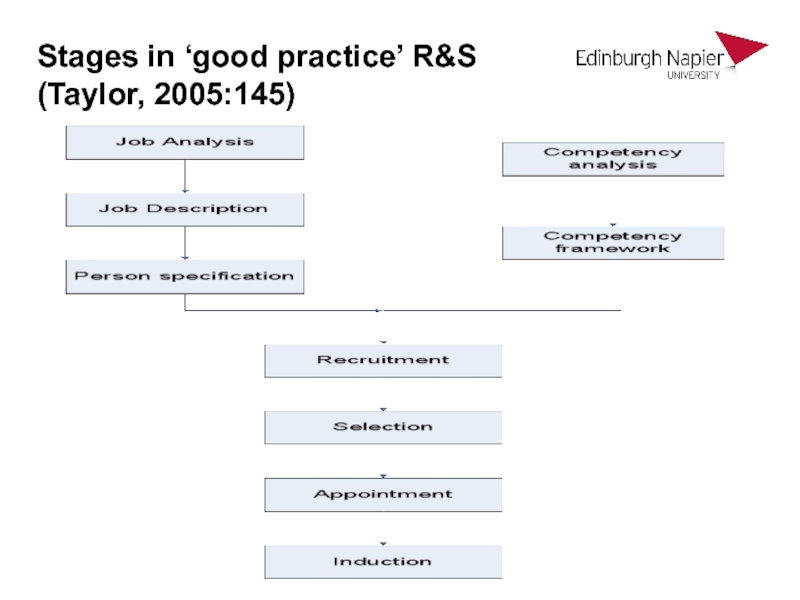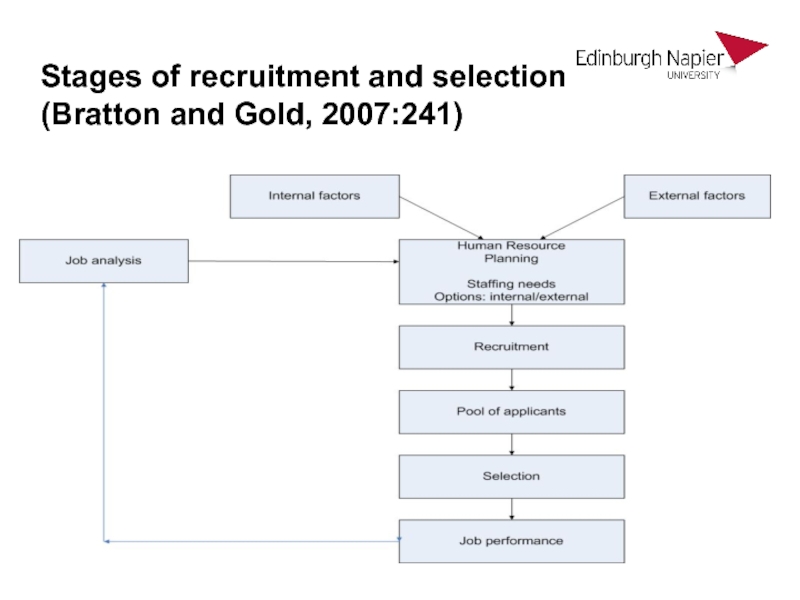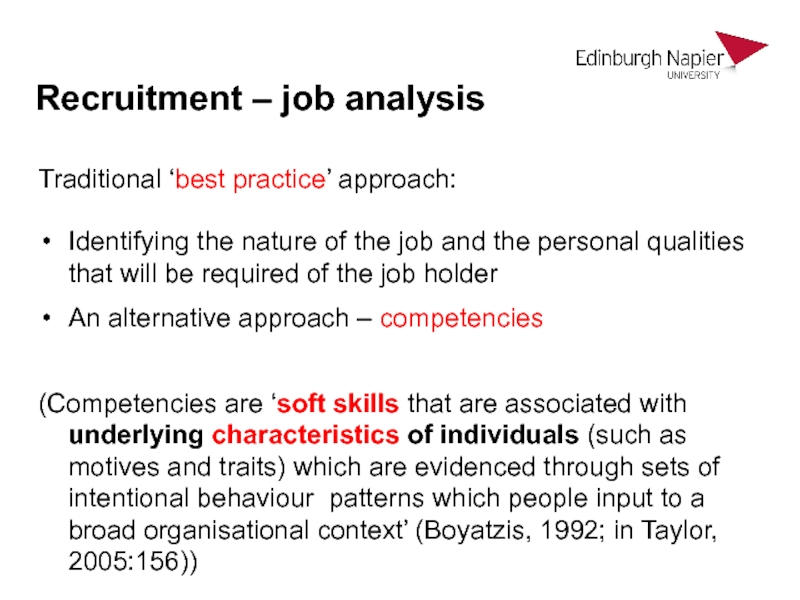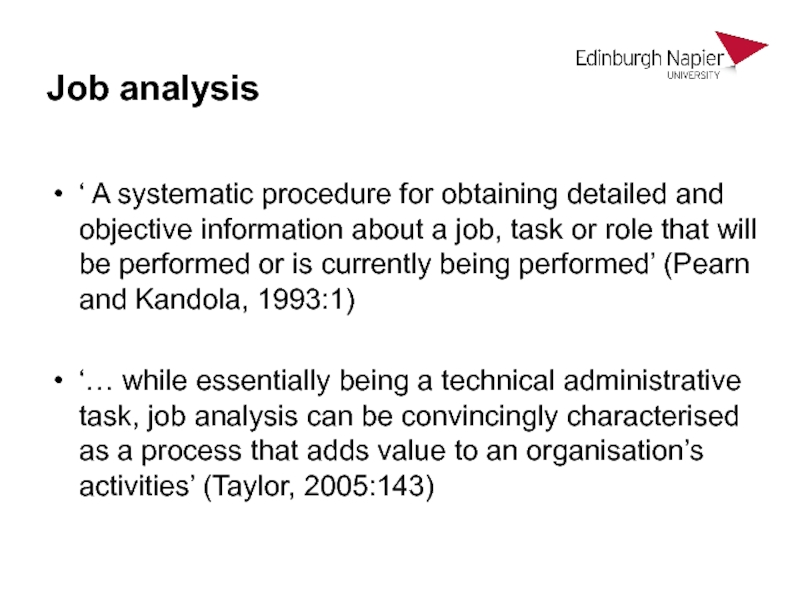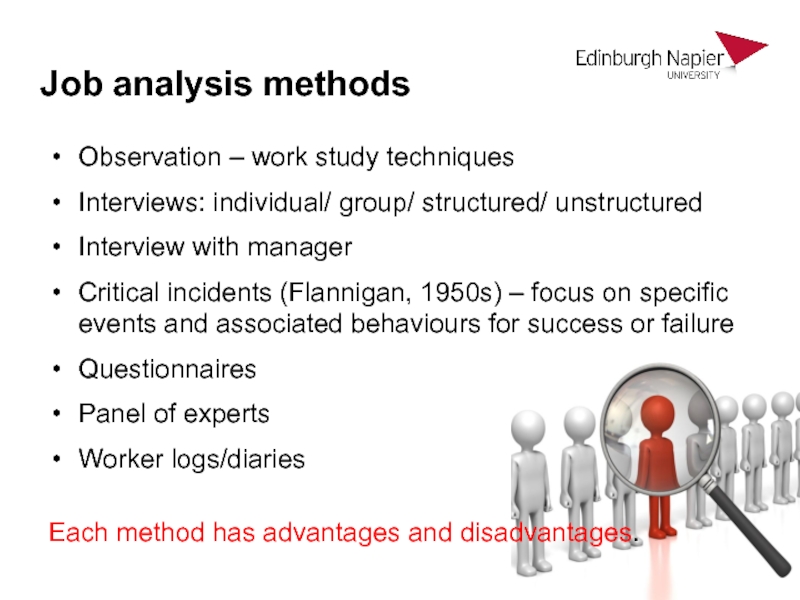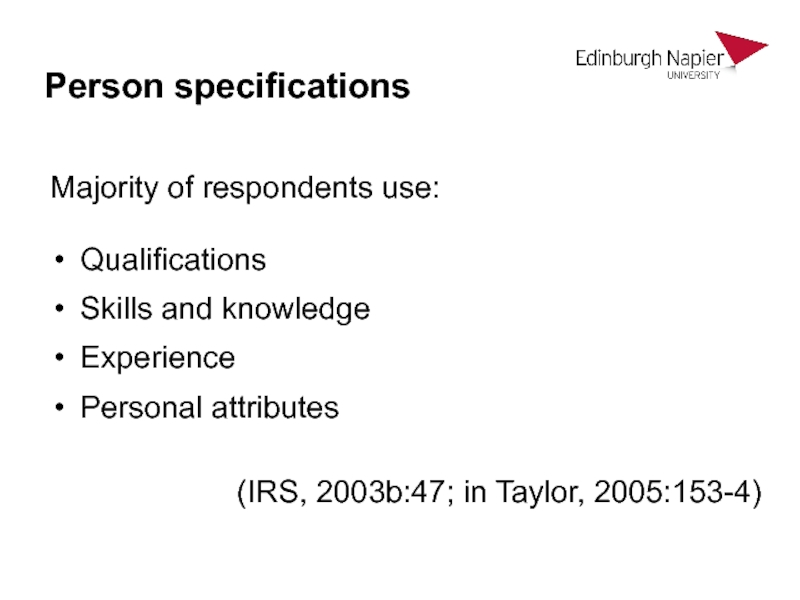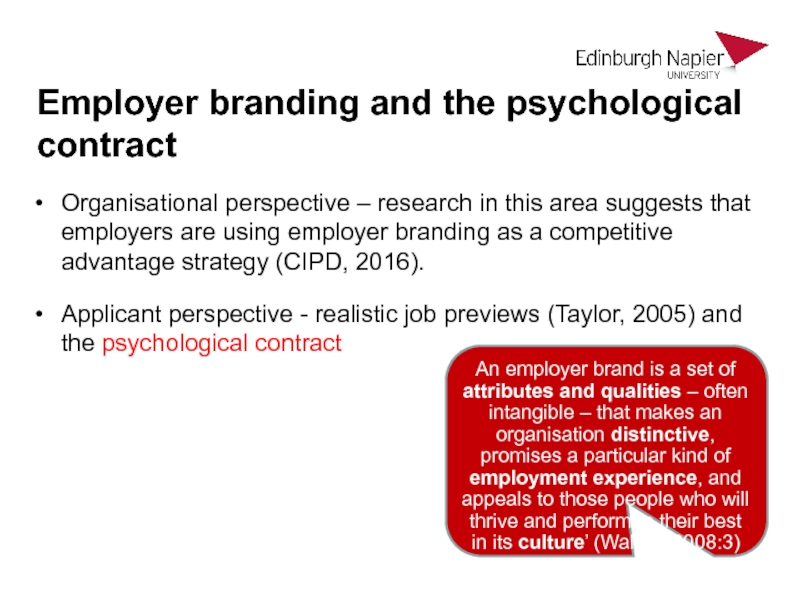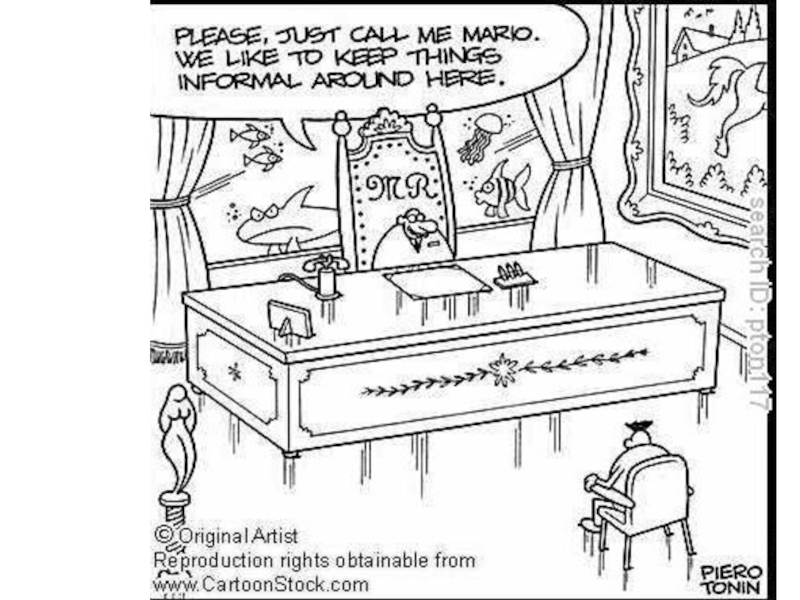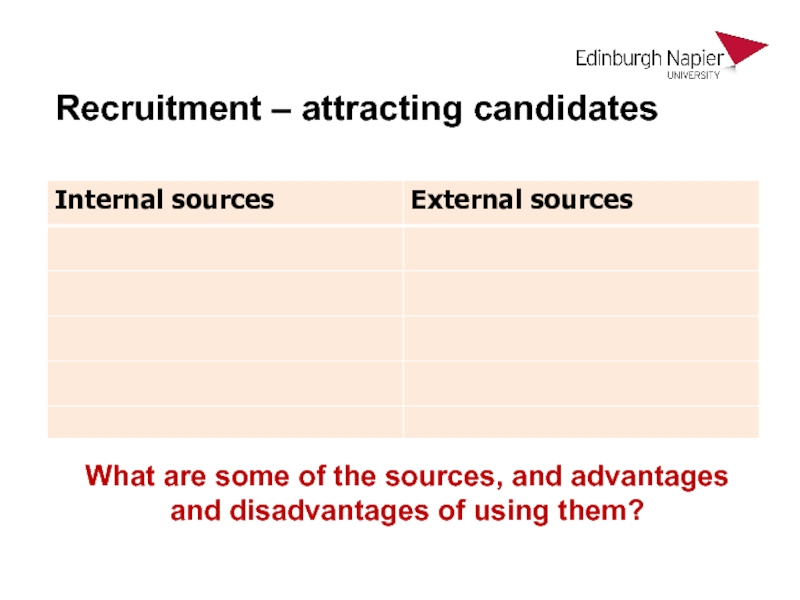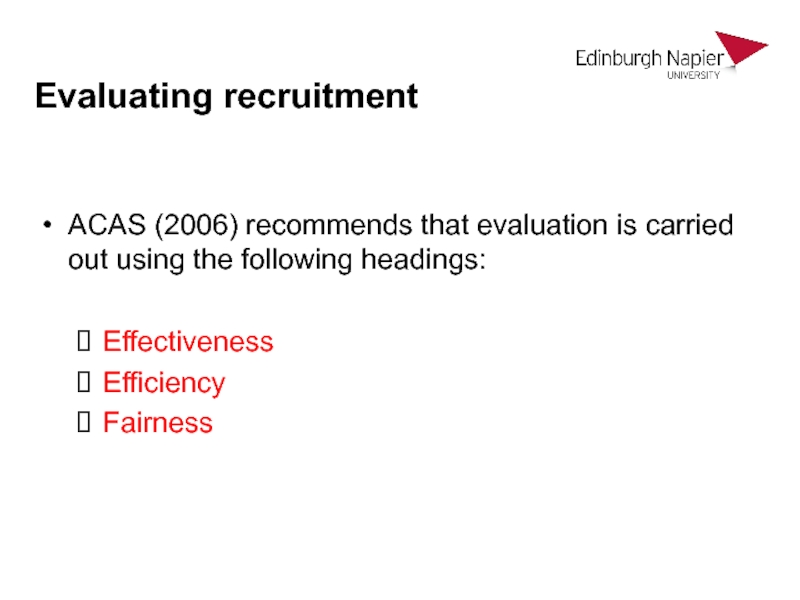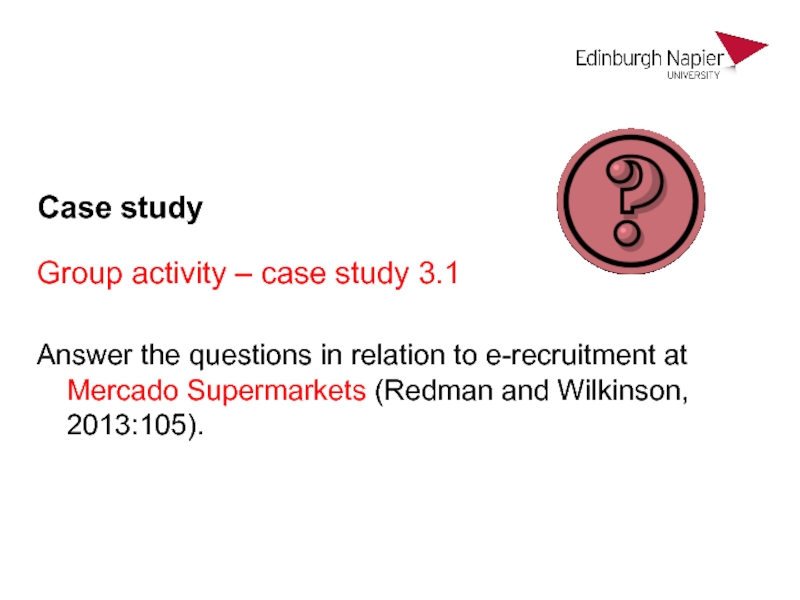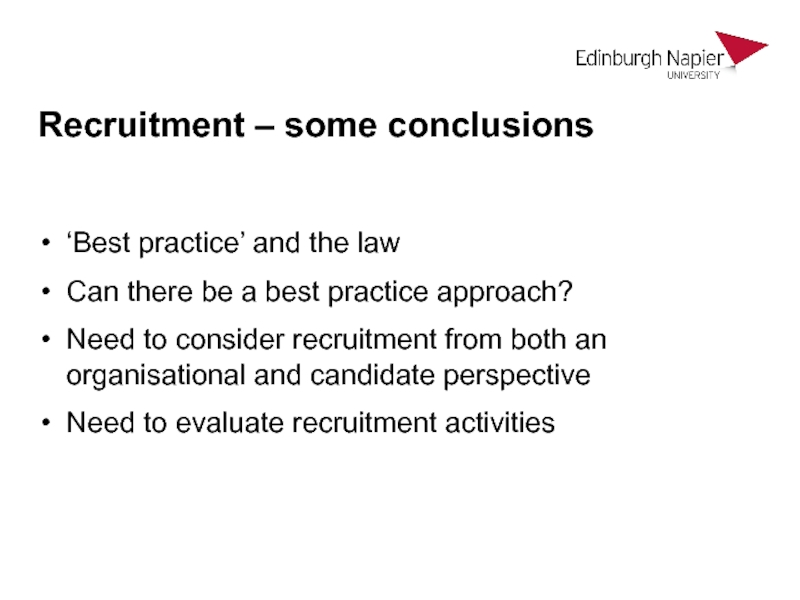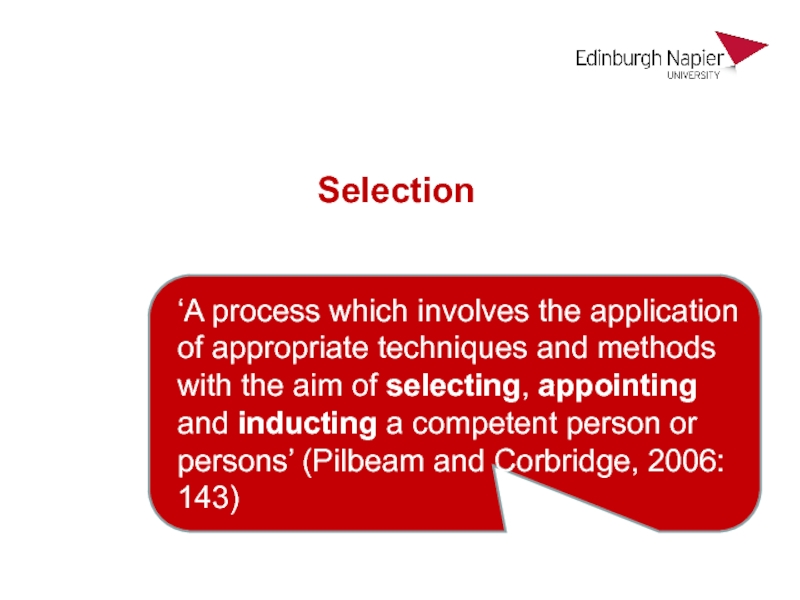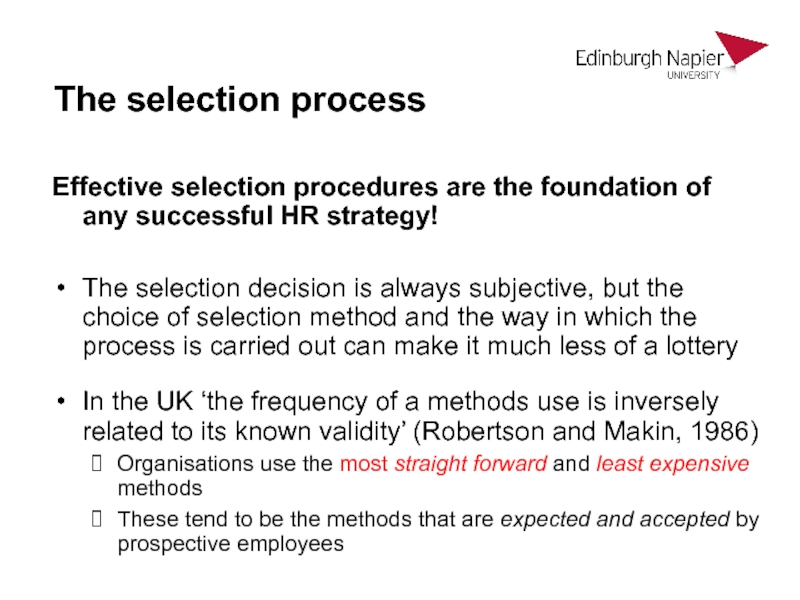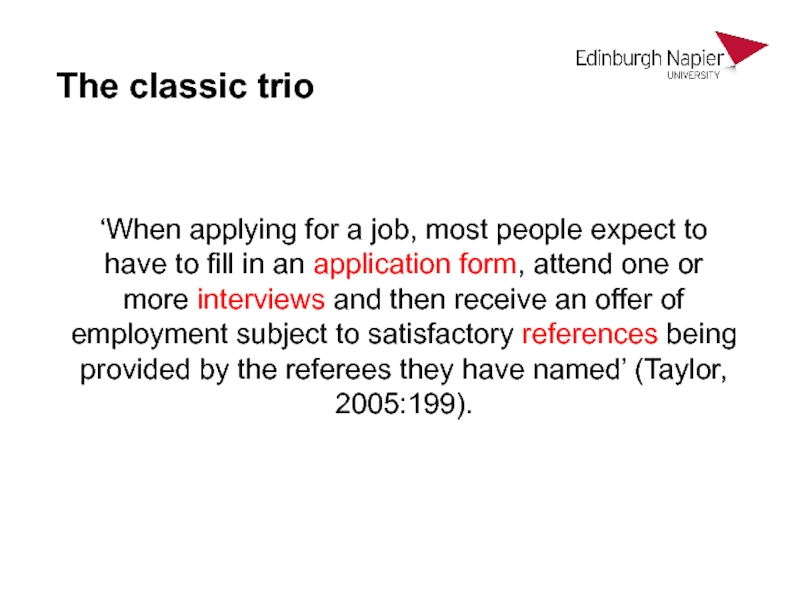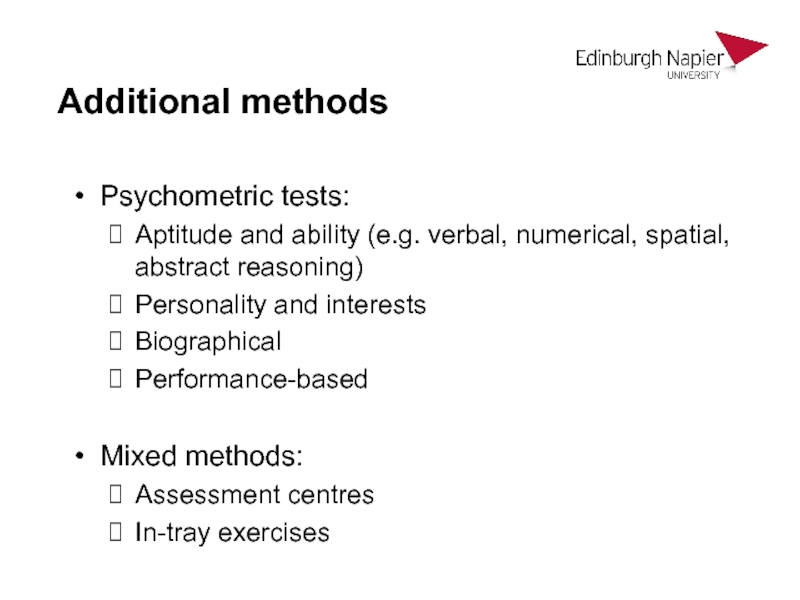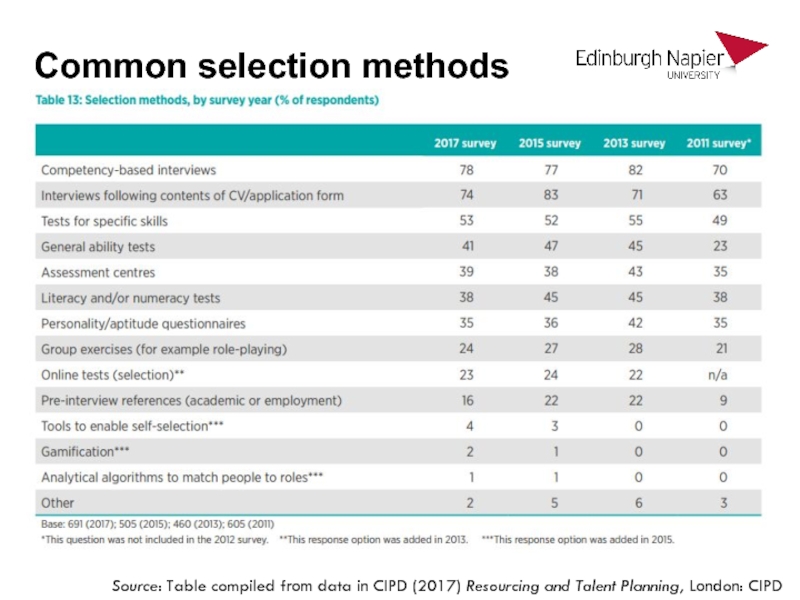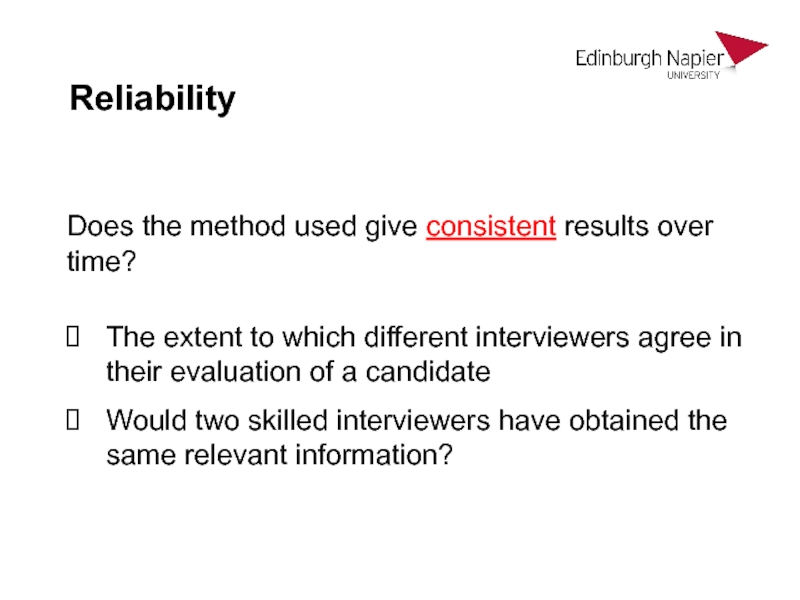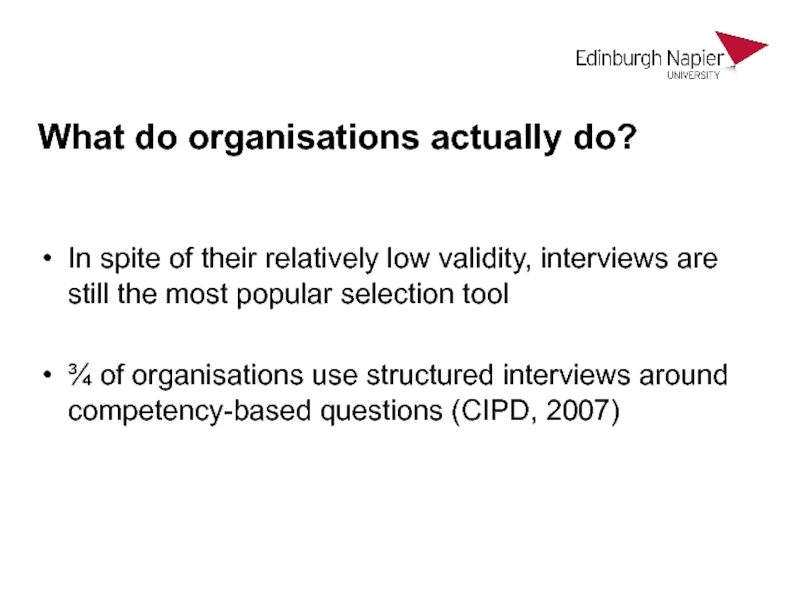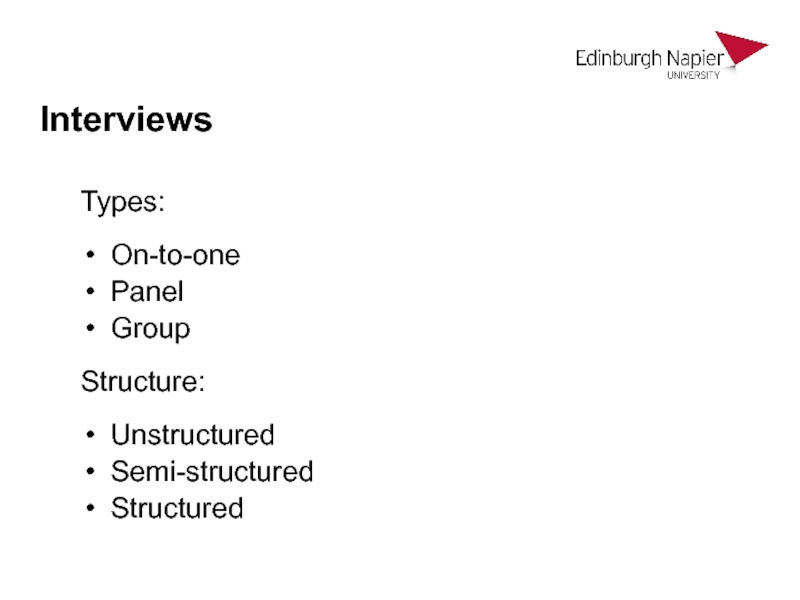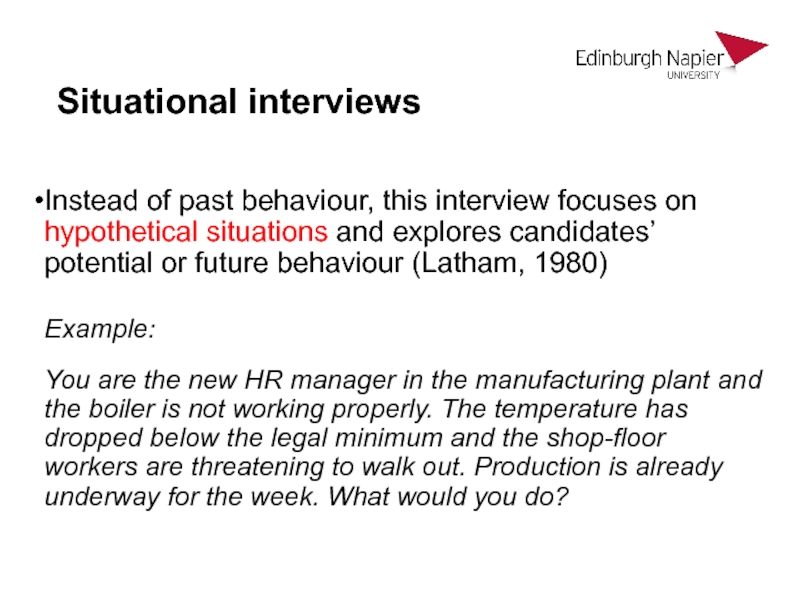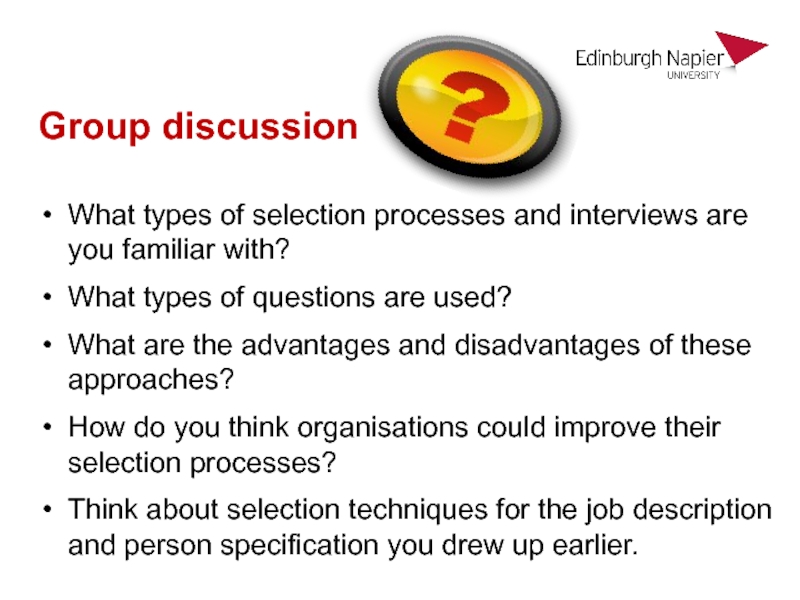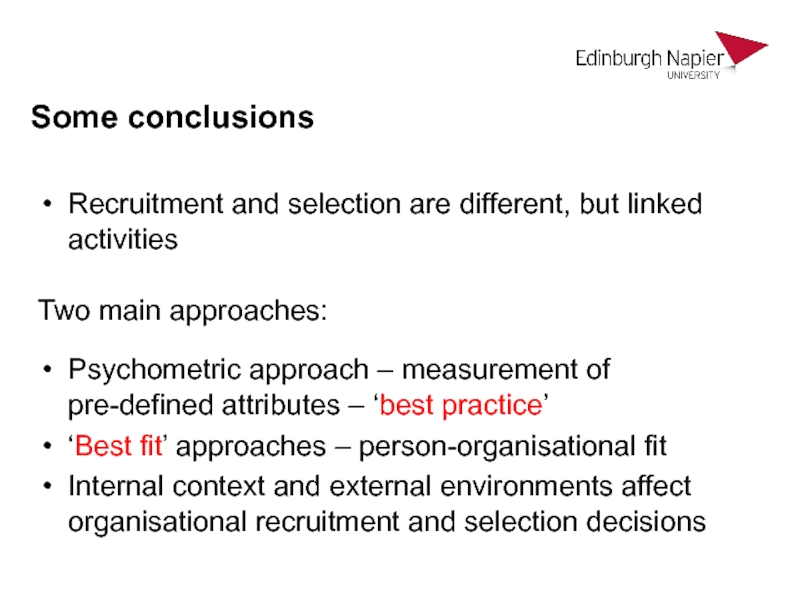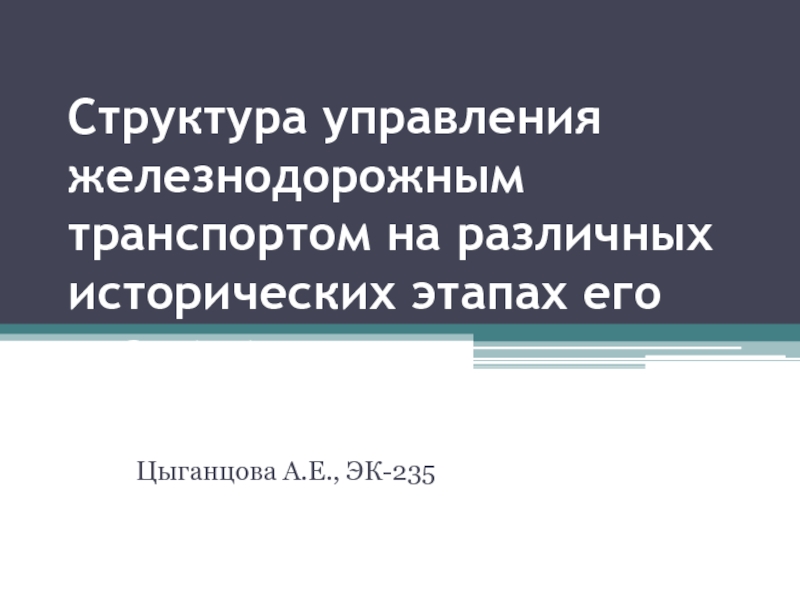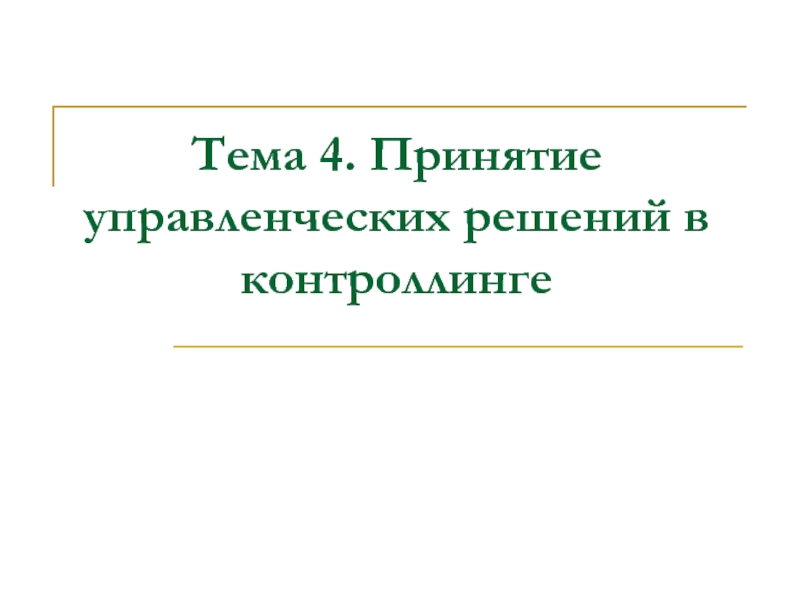- Главная
- Разное
- Дизайн
- Бизнес и предпринимательство
- Аналитика
- Образование
- Развлечения
- Красота и здоровье
- Финансы
- Государство
- Путешествия
- Спорт
- Недвижимость
- Армия
- Графика
- Культурология
- Еда и кулинария
- Лингвистика
- Английский язык
- Астрономия
- Алгебра
- Биология
- География
- Детские презентации
- Информатика
- История
- Литература
- Маркетинг
- Математика
- Медицина
- Менеджмент
- Музыка
- МХК
- Немецкий язык
- ОБЖ
- Обществознание
- Окружающий мир
- Педагогика
- Русский язык
- Технология
- Физика
- Философия
- Химия
- Шаблоны, картинки для презентаций
- Экология
- Экономика
- Юриспруденция
Contemporary HRM. Recruitment and Selection презентация
Содержание
- 1. Contemporary HRM. Recruitment and Selection
- 2. Session objectives By the end of
- 3. Recruitment and selection Broad and narrow definitions:
- 4. Definitions ‘The terms ‘recruitment’ and
- 5. Why is it important? ‘The importance of
- 6. Why take a holistic approach? Recruitment
- 7. Perspectives in recruitment and selection Traditional psychometric
- 8. Factors impacting upon the recruitment and selection
- 9. What UK laws do you need to
- 11. Stages in ‘good practice’ R&S (Taylor, 2005:145)
- 12. Stages of recruitment and selection (Bratton and Gold, 2007:241)
- 13. Recruitment – job analysis Traditional ‘best practice’
- 14. Job analysis ‘ A systematic procedure
- 15. Job analysis methods Observation – work
- 16. Typical Job description Job title Grade/rate of
- 17. Person specifications Majority of respondents use:
- 18. Job description and person specification activity…
- 19. Employer branding and the psychological contract Organisational
- 20. Attracting candidates through branding CIPD (2017) Resourcing and Talent Planning: Annual Survey Report, London: CIPD
- 22. Recruitment – attracting candidates What are some
- 23. CIPD (2017) Resourcing and Talent Planning: Annual Survey Report, London: CIPD
- 24. Evaluating recruitment ACAS (2006) recommends that
- 25. Case study Group activity –
- 26. Social media
- 27. Recruitment – some conclusions ‘Best practice’
- 28. Selection ‘A process which involves the
- 29. The selection process Effective selection procedures
- 30. The classic trio ‘When applying for a
- 31. Additional methods Psychometric tests: Aptitude and ability
- 32. Common selection methods Source: Table compiled from
- 33. Choosing appropriate selection methods Validity Reliability
- 34. Validity Does the method measure what it
- 35. Does the method used give consistent results
- 36. Trends in selection practice More valid
- 37. What do organisations actually do?
- 38. Interviews Types: On-to-one Panel Group Structure: Unstructured Semi-structured Structured
- 39. Questioning Situational questions (Latham, 1980)
- 40. Situational interviews Instead of past behaviour,
- 41. Behavioural patterned description interviews (BPDI’s) (Janz, 1986)
- 42. Group discussion What types of selection
- 43. Some conclusions Recruitment and selection are different,
Слайд 1Contemporary HRM
Recruitment and Selection
Dr Kirsteen Grant
K.Grant@napier.ac.uk
Room 2/38, Craiglockhart
Слайд 2Session objectives
By the end of this session you will be able
Critically evaluate the different perspectives in relation to recruitment and selection
Critically analyse the different stages of ‘best practice’ recruitment and selection processes
Discuss current trends, issues and controversies within the recruitment and selection process
Слайд 3Recruitment and selection
Broad and narrow definitions:
Broad definitions tend to use the
Narrow definitions see recruitment and selection as different but interlinked activities
Слайд 4Definitions
‘The terms ‘recruitment’ and ‘selection’ are often considered together, but they
Слайд 5Why is it important?
‘The importance of ensuring the selection of the
‘Nothing matters more in winning than getting the right people on the field’
(Welch and Welch, 2005:81)
Слайд 6Why take a holistic approach?
Recruitment is often seen as a preliminary
‘A process which aims to attract appropriately qualified candidates for a particular position from which it is possible and practical to select and appoint a competent person or persons’ (Pilbeam and Corbridge, 2010:156). However:
‘Recruitment supplies the candidates for the selector to judge. Selection techniques cannot overcome the failures in recruitment; they merely make them evident’ (Watson, 1994:203; in Marchington and Wilkinson, 2005:171)
Слайд 7Perspectives in recruitment and selection
Traditional psychometric approach – we know what
‘Best fit’ or ‘exchange ‘approach’ (applicant perspective), recruitment and selection is a two-way process (Illes; in Storey, 2007)
Discussion:
What do you think of the ‘applicant perspective’ – is it apparent in modern R&S? Is it changing?
What factors might impact on potential applicants’ choices?
Слайд 8Factors impacting upon the recruitment and selection process
Geographical location; industry; sector;
Organisational strategy; HR plans; organisation of HR activities – centralisation and decentralisation
Economy and labour markets - supply of job applicants with the skills required
Demographic and social factors
Employment law
The nature of the job itself
Слайд 9What UK laws do you need to be aware of when
……..?
……..?
……..?
……..?
……..?
……..?
Слайд 13Recruitment – job analysis
Traditional ‘best practice’ approach:
Identifying the nature of the
An alternative approach – competencies
(Competencies are ‘soft skills that are associated with underlying characteristics of individuals (such as motives and traits) which are evidenced through sets of intentional behaviour patterns which people input to a broad organisational context’ (Boyatzis, 1992; in Taylor, 2005:156))
Слайд 14Job analysis
‘ A systematic procedure for obtaining detailed and objective information
‘… while essentially being a technical administrative task, job analysis can be convincingly characterised as a process that adds value to an organisation’s activities’ (Taylor, 2005:143)
Слайд 15Job analysis methods
Observation – work study techniques
Interviews: individual/ group/ structured/ unstructured
Interview
Critical incidents (Flannigan, 1950s) – focus on specific events and associated behaviours for success or failure
Questionnaires
Panel of experts
Worker logs/diaries
Each method has advantages and disadvantages.
Слайд 16Typical Job description
Job title
Grade/rate of pay
Main location
Supervisor’s name/post
Details of any workers
Summary of the main purpose
List of principal duties
(Foot and Hook, 2005:80)
Слайд 17Person specifications
Majority of respondents use:
Qualifications
Skills and knowledge
Experience
Personal attributes
(IRS, 2003b:47; in Taylor,
Слайд 19Employer branding and the psychological contract
Organisational perspective – research in this
Applicant perspective - realistic job previews (Taylor, 2005) and the psychological contract
An employer brand is a set of attributes and qualities – often intangible – that makes an organisation distinctive, promises a particular kind of employment experience, and appeals to those people who will thrive and perform to their best in its culture’ (Walker, 2008:3)
Слайд 20Attracting candidates through branding
CIPD (2017) Resourcing and Talent Planning: Annual Survey
Слайд 22Recruitment – attracting candidates
What are some of the sources, and advantages
Слайд 24Evaluating recruitment
ACAS (2006) recommends that evaluation is carried out using the
Effectiveness
Efficiency
Fairness
Слайд 25Case study
Group activity – case study 3.1
Answer the questions in relation
Слайд 27Recruitment – some conclusions
‘Best practice’ and the law
Can there be a
Need to consider recruitment from both an organisational and candidate perspective
Need to evaluate recruitment activities
Слайд 28
Selection
‘A process which involves the application of appropriate techniques and methods
Слайд 29The selection process
Effective selection procedures are the foundation of any successful
The selection decision is always subjective, but the choice of selection method and the way in which the process is carried out can make it much less of a lottery
In the UK ‘the frequency of a methods use is inversely related to its known validity’ (Robertson and Makin, 1986)
Organisations use the most straight forward and least expensive methods
These tend to be the methods that are expected and accepted by prospective employees
Слайд 30The classic trio
‘When applying for a job, most people expect to
Слайд 31Additional methods
Psychometric tests:
Aptitude and ability (e.g. verbal, numerical, spatial, abstract reasoning)
Personality
Biographical
Performance-based
Mixed methods:
Assessment centres
In-tray exercises
Слайд 32Common selection methods
Source: Table compiled from data in CIPD (2017) Resourcing
Слайд 33Choosing appropriate selection methods
Validity
Reliability
Acceptability
Appropriateness
Abilities of the staff involved
Administrative ease
Time factors
Accuracy
Cost
(Torrington et al., 2005:144)
Слайд 34Validity
Does the method measure what it purports to measure?
Face validity
Content validity - are the assessed factors relevant to the job/organisation?
Empirical validity - has the method been shown in practice to predict job suitability?
Predictive validity - study the performance of employees after they have been recruited. Which predictions of their performance, made on the basis of the interview or test, are confirmed in practice?
Слайд 35Does the method used give consistent results over time?
The extent to
Would two skilled interviewers have obtained the same relevant information?
Reliability
Слайд 36Trends in selection practice
More valid and reliable assessment tools
Greater use of
Increasing importance of assessing non-cognitive qualities (emotional intelligence)
Increasing use of bespoke simulations
Online delivery of assessment
(Redman and Wilkinson, 2009:98-9)
Слайд 37What do organisations actually do?
In spite of their relatively low validity,
¾ of organisations use structured interviews around competency-based questions (CIPD, 2007)
Слайд 39Questioning
Situational questions (Latham, 1980)
Behaviour patterned descriptive interviews (behavioural interview) (Janz, 1996)
Слайд 40Situational interviews
Instead of past behaviour, this interview focuses on hypothetical situations
Example:
You are the new HR manager in the manufacturing plant and the boiler is not working properly. The temperature has dropped below the legal minimum and the shop-floor workers are threatening to walk out. Production is already underway for the week. What would you do?
Слайд 41Behavioural patterned description interviews (BPDI’s) (Janz, 1986)
Past behaviour is the best
Rich detail re. what was done and underlying motivations – asking the how and why questions
Usually developed through job analysis and critical incident technique to uncover which critical categories of behaviour underpin effective performance
Shown to have high predictive reliability and validity (Anderson and Shackleton, 1993)
Example:
‘Tell me about a time…’
Слайд 42Group discussion
What types of selection processes and interviews are you familiar
What types of questions are used?
What are the advantages and disadvantages of these approaches?
How do you think organisations could improve their selection processes?
Think about selection techniques for the job description and person specification you drew up earlier.
Слайд 43Some conclusions
Recruitment and selection are different, but linked activities
Two main approaches:
Psychometric
‘Best fit’ approaches – person-organisational fit
Internal context and external environments affect organisational recruitment and selection decisions

